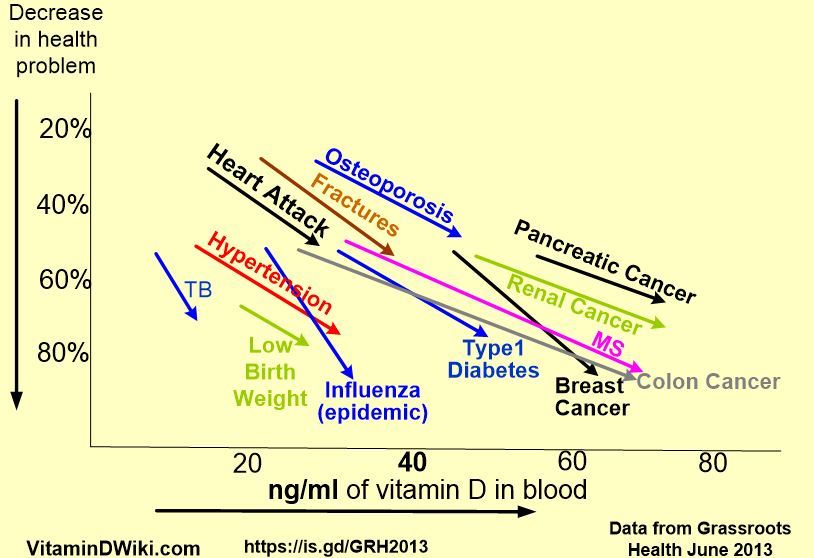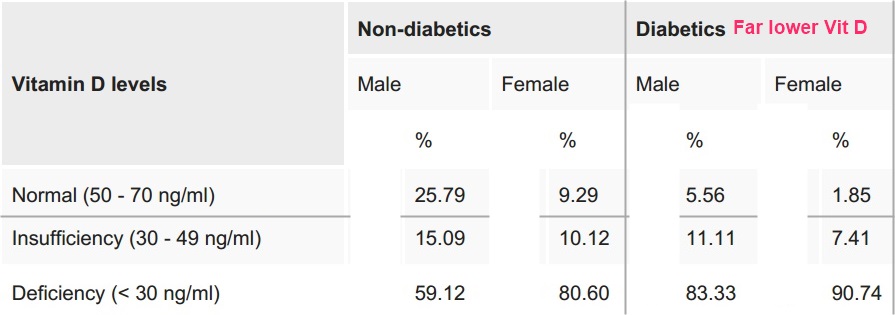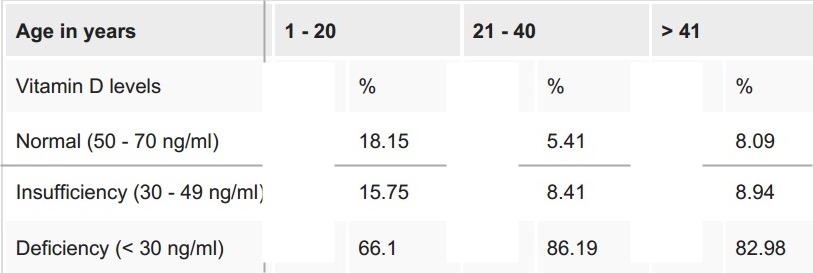Saudi study defines normal Vitamin D level to be 50 to 70 ng (diabetes, etc.)
25(OH)D Serum Level in Non-Diabetic and Type II Diabetic Patients: A Cross-Sectional Study
Cureus. 2020 Jun 29;12(6):e8910. doi: 10.7759/cureus.8910.
Mohmmed A AlHewishel 1, Mohammed Bahgat 2, Abdullah Al Huwaiyshil 1, Mustafa A Alsubie 1, Abdullah Alhassan
 ---
1. Overview Diabetes and vitamin D contains the following
{include}
Diabetic Epidemic
{include}
---
1. Middle East and Vitamin D contains the following summary
{include}
---
1. Overview Diabetes and vitamin D contains the following
{include}
Diabetic Epidemic
{include}
---
1. Middle East and Vitamin D contains the following summary
{include}
📄 Download the PDF from VitaminDWiki


Note: Saudi females wear concealing clothing in 20's+

Background
Diabetes mellitus is a major disease worldwide. In Saudi Arabia, it is considered to be the most common disease in the country. Diabetes mellitus has been also found to be associated with 25(OH)D (vitamin D) deficiency. In Saudi Arabia, sunlight is considered a major source for vitamin D. Saudi Arabia is popular for sunny weather most of the year, in which people can get vitamin D from the sun. However, vitamin D deficiency is common in Saudi Arabia, and its deficiency can increase blood glucose levels. We conducted a study to determine the reason for vitamin D deficiency in Saudi Arabia and to assess the relationship of diabetes mellitus with vitamin D. Aim of the work This study is aimed to assess the incidence of vitamin D deficiency in non-diabetic and type II diabetic patients in the King Faisal University (KFU) Health Center in the Al-Ahsa region.
Methods
Our study is a cross-sectional study that was carried out at the KFU Health Center in Saudi Arabia. Ethical approval was obtained from the Ethics and Research Committee at the College of Medicine at King Faisal University. The study period was from January 2016 to April 2016. We collected each patient's vitamin D serum level, glycosylated hemoglobin (HbA1c), and fasting blood glucose at the same time for each patient's particular visit to the hospital. Data were analyzed using the Statistical Package for Social Sciences (SPSS) (IBM SPSS Statistics, Armonk, NY).
Results
Our results showed that 89.53% of the patients had a vitamin D level below the normal range. There was a higher incidence of vitamin D deficiency in females (81.67%) than in males (65.27%) (p-value = 0.001). The incidence of vitamin D deficiency was greater in Saudi (82.19%) than non-Saudi patients (68.40%) (p-value = 0.001), as well as in diabetics (89.68%) than non-diabetics (76.12%) patients (p-value = 0.001). Within each group, the incidence of vitamin D deficiency was higher in females than in males. The incidence of vitamin D deficiency was highest in the age group of 21 to 40 years old (86.19%) and lowest in the age group of one to 20 years old (66.1%). The results showed an inverse relationship between the vitamin D level and both fasting blood glucose and HbA1c (independent sample t-test) were used for correlation. The mean fasting glucose was higher in the deficiency group (165.55) as compared to the insufficiency group (118.67). Also, the mean HbA1c was higher in the deficiency group (8.06) as compared to the insufficiency group (7.23) (p-value = 0.030).
Conclusions
There was a high incidence of vitamin D deficiency among KFU Health Center patients. The vitamin D level was inversely proportional to the level of fasting glucose and HbA1c. There is an evident role of vitamin D deficiency on glucose tolerance in diabetic patients.
